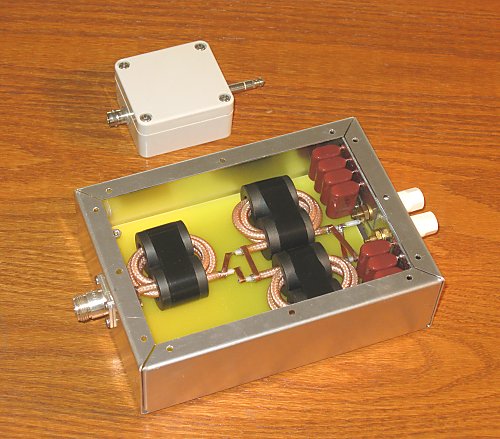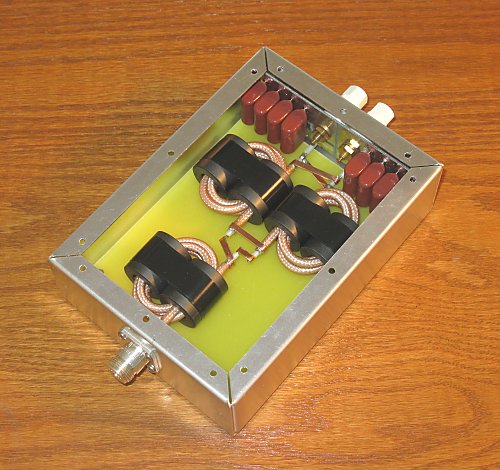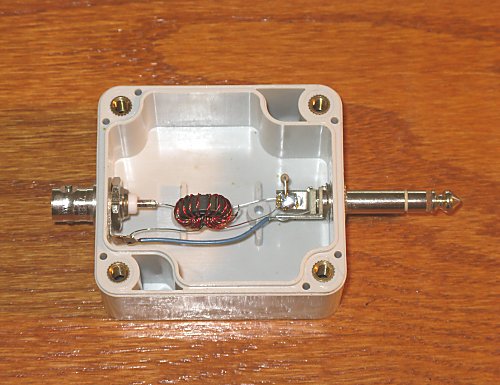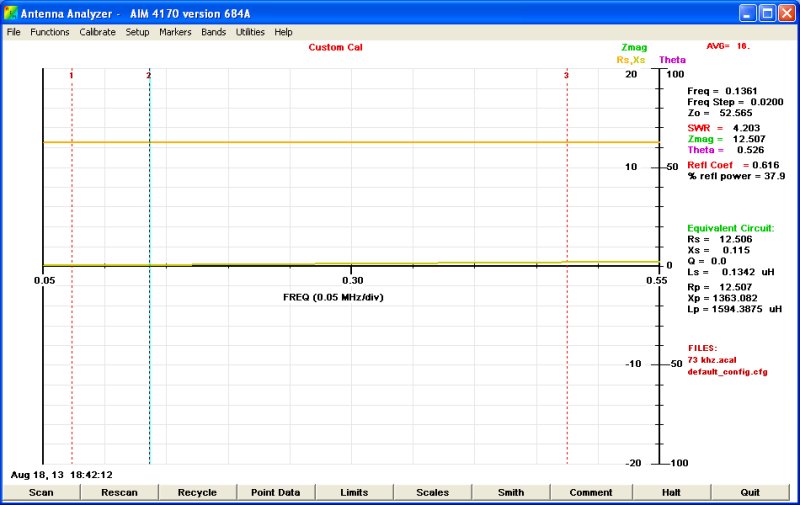|
Hafler P3000 / 9505 Input & Output Transformers |

|
|
The addition of 73 kHz as an FCC Part 5 low frequency 'band' prompted a look at the Hafler P3000 and Hafler 9505 output transformer. The
original output transformer was designed by John Andrews, W1TAG, for operation on 137 kHz. With some additional capacitors in series the output transformer could be operated at 500 kHz. This meant that two different setups were required - one for each band. With the addition of a third band, this meant that three different transformer setups would be required. Since the Hafler amplifiers cover all three bands without bandswitching, a single output transformer that would handle all three bands seemed a reasonable goal. The new output transformer described here meets that requirement. A new input transformer is also described.
|

|
|
The output transformer was constructed in a 7" X 5" X 2" aluminum chassis. Binding posts are used on the 12.5 ohm side - a short length of twisted pair (#14 stranded) connects the transformer to the Hafler amplifier. An N connector is used on the 50 ohm side which in turn attaches to the appropriate low pass filter. C1 - C8 are mounted to a circuit board that connects directly to the binding posts. A piece of scrap FR4 circuit board with the copper etched off is mounted above the chassis bottom by standoffs. TL1, TL2 and TL3 are held in position with small dabs of RTV. There's no need to follow this construction technique - at these frequencies almost any arrangement will work. Inititial testing was carried out in the open on a benchtop with results indistinguishable from the packaged version. |

|
|
The input transformer is housed in a 2-1/4" X 2-1/2" X 1-3/8" plastic box. The 50 ohm input is a BNC connector and a 1/4" stereo phone plug plugs directly into the Hafler input. A hole is drilled and tapped to accept the stereo phone plug which is then epoxied in place. Originally it wasn't clear whether or not a ground would be used between the exciter and the Hafler so a plastic box was used to allow for a 'ground lift'. It turned out that a ground connection has been used ever since the original testing. There's no reason not to use a shielded box, however no problems have been noted using a plastic box. Feeding signal to the balanced inputs no doubt helps deter common mode signals.
|

|
|
Readings were taken at several frequencies of interest and are presented in the table below. Note that the curves are smooth and 'well behaved' indicating no frequency dependant 'anomolies'.
|